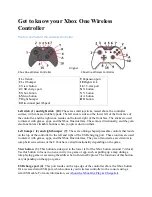
Tuning and Control
MLS User’s Guide 101
Proportional and Integral Control
For Proportional and Integral control, use the Integral term, or Reset,
with Proportional control. The Integral term corrects for offset by
repeating the Proportional band's error correction until there is no error.
For example, if a process tends to settle about 5
º
F below the setpoint,
use Integral control to bring it to the desired setting.
The next diagram shows a process under proportional and integral
control.
Proportional, Integral and Derivative Control
For an improved level of control, use Derivative control with
Proportional or Proportional and Integral control. Derivative control,
also called the Rate function, corrects for overshoot by anticipating the
behavior of the process variable and adjusting the output appropriately.
For example, if the process variable is rapidly approaching the setpoint,
Derivative control reduces the output, anticipating that the process
variable will reach setpoint. Use it to eliminate the process variable
overshoot common to PI control.
This figure shows a process under full PID (Proportional, Integral, and
Derivative) control.
Содержание MLS-PM
Страница 13: ...Contents MLS User s Guide vi...
Страница 17: ...4 MLS User s Guide Overview...
Страница 59: ...46 MLS User s Guide Installation...
Страница 120: ...Tuning and Control MLS User s Guide 107...
Страница 121: ...108 MLS User s Guide Tuning and Control...
Страница 131: ...118 MLS User s Guide Troubleshooting...
Страница 143: ...Glossary MLS User s Guide 130...
















































